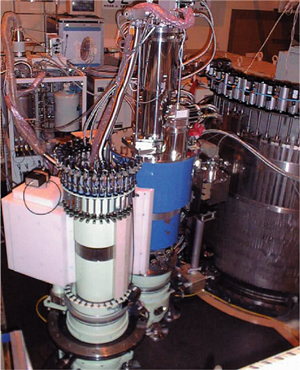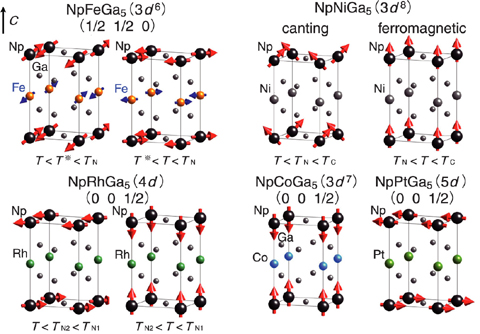
Fig.6-2 Triple-Axis Spectrometer LTAS in JRR-3

Fig.6-3 Variety of magnetic structures in NpTGa5
Actinide compounds with 5f electrons exhibit highly interesting electronic properties. Strong magnetism in rare earth compounds is a consequence of the localized nature of 4f electrons at atomic sites. On the other hand, 5f electrons in light actinides such as uranium, neptunium, and plutonium have an itinerant character.
Neutron scattering studies of neptunium compounds have been carried out using the low energy cold neutron triple axis spectrometer LTAS (Fig.6-2) installed in the guide hall of the research reactor JRR-3 in JAEA. Only a few actinide compounds have been studied by neutron scattering, and actually these were the first experiments of actinide neutron scattering done in Japan. Neutrons with spin 1/2 are the most powerful probe for studying magnetic structure. The size and the direction of the magnetic moment carried by actinide elements are important information for determining the electronic state of 5f electrons.
Our systematic experiments revealed a variety of the magnetic structure in Np compounds NpTGa5 (T = Fe, Co, Ni, Rh, or Pt), depending on the transition metal element T as shown in Fig.6-3. For T = Fe, Ni, and Rh, a double transition has been observed. Neutron polarization analysis clarified that the magnetic moments of Np and Fe in NpFeGa5 are perpendicular to the crystallographical c-axis, namely in the tetragonal basal plane. However, the magnetic moments are tilted in the ground state structure. In NpNiGa5 the magnetic moment of Np exhibits a ferromagnetic ordering with the magnetization parallel to the c-axis below the Curie temperature Tc = 18 K, while there is a stable non-collinear (canting) structure in the ground state. We found a very unusual reduction of the magnetic moment from the canting to the ferromagnetic phase with application of the magnetic field. These results indicate that the 5f electronic state changes with the magnetic transitions.
The itinerant character of 5f electrons in NpNiGa5 is shown by a good agreement of the observed Fermi surface topology with band structure calculation. The theoretical study based on the magnetic and quadrupole interactions explains the variety of the magnetic structures and the double transition, where the orbital degree-of-freedom plays an important role. Our study indicates a possible orbital (quadrupole) ordering in the itinerant many body 5f electron system with strong correlation. Further experimental and theoretical study should be carried out in order to determine the order parameter in this highly interesting system.